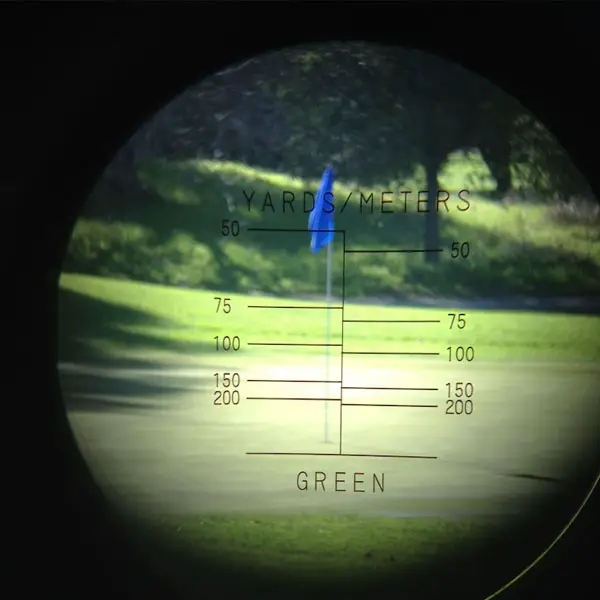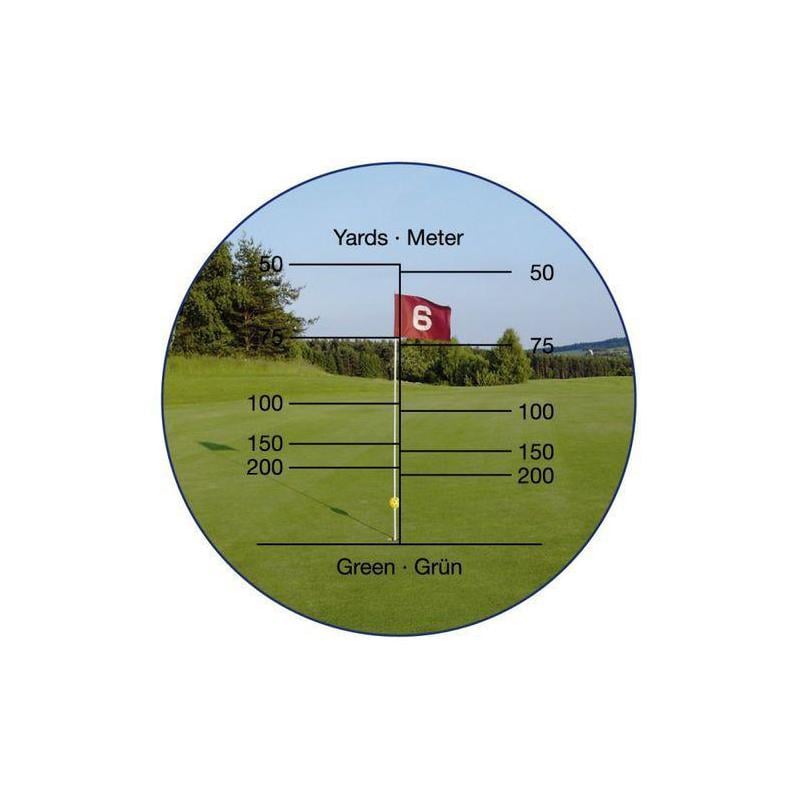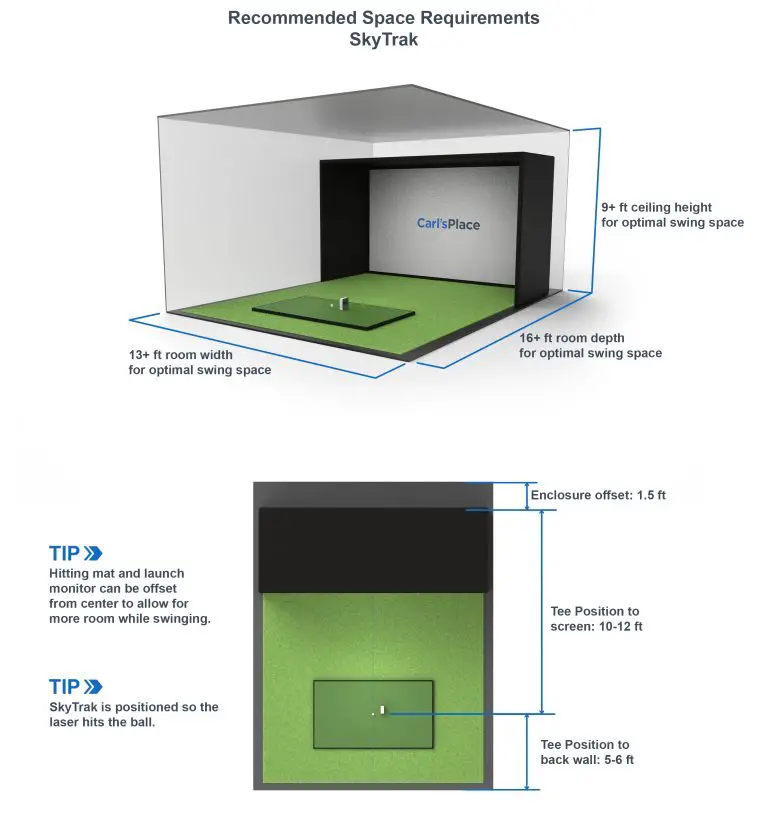How To Use A Golf Rangefinder Scope

Enhancing your golf game requires precision, strategy, and accurate distance measurements. That’s where a golf rangefinder scope becomes an invaluable tool. Whether you’re a seasoned golfer or just starting out, understanding how to use a golf rangefinder scope effectively can significantly improve your gameplay and help you make more informed decisions on the course.
A golf rangefinder scope is an optical device specifically designed to measure distances between you and your target with remarkable precision. By utilizing advanced laser or GPS technology, these devices provide accurate distance readings, allowing you to select the appropriate club and plan your shots more effectively.
In this comprehensive guide, we will walk you through the step-by-step process of using a golf rangefinder scope. From understanding the different types of rangefinders to selecting the right device for your needs, we will cover everything you need to know. You will learn how to handle and maintain your rangefinder, prepare for a round of golf, accurately measure distances, and utilize the obtained information to optimize your gameplay.
Get ready to elevate your golfing experience with the power of accurate distance measurements. Let’s dive into the world of golf rangefinder scopes and discover how they can help you achieve greater precision and success on the golf course.

Understanding Golf Rangefinder Scopes
What is a Golf Rangefinder Scope?
A golf rangefinder scope is an optical device designed to determine the distance between the player and the target. By utilizing advanced technology, these devices offer accurate distance measurements, enabling golfers to make more informed decisions during their gameplay. The ability to accurately assess distances is crucial for selecting the appropriate club and executing shots effectively.
Types of Golf Rangefinder Scopes
Golf rangefinder scopes come in two main types: laser rangefinders and GPS rangefinders. Understanding the differences between these types can help you choose the one that best suits your needs and preferences.
Laser Rangefinders
Laser rangefinders employ laser technology to measure distances. They work by emitting a laser beam towards the target and calculating the time it takes for the beam to return, providing an accurate distance reading. Laser rangefinders offer versatility and precise measurements, making them a popular choice among golfers.
GPS Rangefinders
GPS rangefinders utilize satellite technology to determine distances on the golf course. These devices rely on pre-loaded course maps and satellite data to provide accurate measurements. GPS rangefinders offer additional features such as hole overviews, hazards mapping, and shot tracking, making them a comprehensive tool for golfers.
Choosing the Right Golf Rangefinder Scope
When selecting a golf rangefinder scope, several factors should be considered to ensure you find the device that aligns with your needs and preferences.
Considerations for Selecting a Golf Rangefinder Scope
- Budget: Determine your budget range to narrow down your options and find a rangefinder that offers the desired features within your price range.
- Features: Consider the specific features you require, such as slope measurement, target locking, or pin seeker modes. Evaluate which features are essential for your game.
- Personal Preferences: Take into account factors like size, weight, and ease of use. Consider whether you prefer a compact device or one with a larger display for better visibility.
Popular Golf Rangefinder Brands and Models
There are various reputable golf rangefinder brands and models known for their quality and performance. Here are a few popular options worth considering:
| Brand | Model | Features |
|---|---|---|
| Bushnell | Tour V5 Shift | PinSeeker with Visual JOLT technology |
| Nikon | Coolshot Pro Stabilized | Image stabilization for steady measurements |
| Callaway | 300 Pro | Slope mode for incline and decline compensation |
| Garmin | Approach Z82 | Full-color CourseView maps and PlaysLike Distance |
By researching and comparing different brands and models, you can find the golf rangefinder scope that best matches your requirements and budget.
Getting Started with a Golf Rangefinder Scope
Before diving into the practical usage of a golf rangefinder scope, it is essential to familiarize yourself with the device and understand how to handle and maintain it properly.
Familiarizing Yourself with the Device
To make the most of your golf rangefinder
scope, it’s important to have a good understanding of its different parts and features. While specific models may have slight variations, the following components are commonly found:
- Objective Lens: The lens located at the front of the device through which you observe the target.
- Eyepiece: The lens closest to your eye, allowing you to view the distance measurement.
- Mode/Power Button: The button used to turn the device on or off and access different modes or settings.
- Display: The screen that shows the distance measurement and other relevant information.
- Battery Compartment: The area where you insert the batteries to power the rangefinder.
- Carrying Strap: A strap attached to the device to secure it around your wrist or hang it conveniently.
- User Manual: A detailed guide provided by the manufacturer with specific instructions for your rangefinder model.
It is highly recommended to read the user manual thoroughly to familiarize yourself with your specific device’s functionality and operation.
Proper Handling and Maintenance
To ensure the longevity and optimal performance of your golf rangefinder scope, proper handling and maintenance are essential. Follow these guidelines to take care of your device:
- Cleaning the Lenses: Use a microfiber cloth or lens cleaning solution to gently wipe the objective lens and eyepiece. This removes dirt, smudges, and debris, ensuring clear visibility.
- Avoiding Harsh Environments: Protect your rangefinder scope from extreme temperatures, moisture, and direct sunlight, as these conditions can damage the device.
- Secure Storage: Store your rangefinder in a protective case or pouch when not in use. This prevents accidental damage or scratches.
- Battery Management: Check the battery life before heading to the course and carry spare batteries if necessary. Regularly replace the batteries to ensure consistent performance.
By following these maintenance practices, you can extend the lifespan of your golf rangefinder scope and maintain its accuracy.
Using a Golf Rangefinder Scope on the Course
Now that you are familiar with the basic knowledge and maintenance of a golf rangefinder scope, let’s explore how to effectively utilize it on the golf course. By following these steps, you’ll be able to make accurate distance measurements and optimize your gameplay.
Preparing for a Round of Golf
Before using your golf rangefinder scope on the course, some preparations will help you maximize its effectiveness.
Course Mapping and Pre-Game Planning
To utilize your rangefinder scope effectively, familiarize yourself with the golf course layout and plan your shots in advance. Consider the following steps:
- Study the Course: Obtain a course map or use a golf GPS app to analyze the layout, including hole distances, hazards, and doglegs.
- Identify Targets: Identify specific targets or landmarks on each hole that you can use as reference points for distance measurements. These targets could be bunkers, trees, or even distinctive features of the course.
- Plan Your Strategy: Based on the distances and potential hazards, create a strategy for each hole, determining the clubs you’ll need for optimal performance.
By mapping out the course and having a clear plan in mind, you’ll be better equipped to use your rangefinder scope effectively during gameplay.
Battery Check and Settings Adjustment
Before heading to the course, it’s crucial to check the battery life of your rangefinder scope and adjust any necessary settings.
- Battery Check: Ensure your device has sufficient battery life for the duration of your round. If the batteries are low, replace them with fresh ones to avoid running out of power mid-game.
- Settings Adjustment: Depending on your rangefinder model, you may need to adjust settings such as the measurement units (yards or meters)
- or the display brightness. Refer to your user manual for specific instructions on accessing and modifying these settings.
By performing these pre-game checks, you can confidently proceed to use your rangefinder scope on the course without any interruptions.
Taking Distance Measurements
With your preparations complete, it’s time to start using your golf rangefinder scope to measure distances accurately. The following steps outline the process:
Aiming and Locking onto Targets
To ensure precise distance measurements, it’s important to aim your rangefinder scope accurately and lock onto the desired target.
- Steady Grip: Hold the rangefinder with a firm and steady grip to minimize any unwanted movement.
- Align the Device: Look through the eyepiece and align the rangefinder with your target. Keep the device steady, and avoid shaking your hands excessively.
- Target Acquisition: Activate the rangefinder’s target acquisition mode, which may involve pressing and holding a specific button or using a separate target locking feature. This mode helps you lock onto the target and obtain the distance measurement.
By practicing your aim and utilizing the target acquisition feature, you can ensure reliable and accurate distance readings.
Activating the Distance Measurement
Once you have aimed at the target and locked onto it, it’s time to activate the distance measurement.
- Trigger the Measurement: Depending on your rangefinder model, there may be different methods to initiate the measurement process. It could involve pressing a dedicated button, releasing a laser beam, or simply holding the device steady for a few seconds.
- Wait for the Reading: Give the rangefinder a moment to calculate the distance accurately. Some devices may provide a visual indicator, such as a blinking light or a vibration, to confirm that the measurement is complete.
- Note the Displayed Distance: Once the measurement is ready, check the rangefinder’s display to read the distance to your target. Take note of this distance for club selection and shot planning.
By following these steps, you can efficiently obtain distance measurements using your golf rangefinder scope during your rounds of golf.
Reading and Utilizing Distance Information
After acquiring the distance measurement, it’s essential to interpret the information provided by your rangefinder scope and use it effectively in your gameplay.
- Club Selection: Based on the measured distance, refer to your club selection guide or personal experience to determine the appropriate club for the shot. Consider the target’s location, wind conditions, and any other factors that may influence your decision.
- Shot Planning: Once you have selected your club, plan your shot accordingly. Adjust your stance, consider shot trajectory, and visualize the intended landing area to execute the shot effectively.
- Reassessing Distances: As you progress through the course, continue using your rangefinder scope to reassess distances for subsequent shots. Remember to consider any elevation changes or hazards that may affect your club selection.
By leveraging the distance information provided by your rangefinder scope, you can make well-informed decisions on the course and improve the accuracy of your shots.
Advanced Techniques and Tips for Using a Golf Rangefinder Scope
While the basic usage of a golf rangefinder scope can greatly benefit your game, there are additional advanced techniques and features that you can explore for further enhancement.
Slope Measurement and Compensation
Some golf rangefinder scopes offer slope measurement and compensation features. These features take into account the incline or decline of the terrain, providing adjusted distances to accommodate for the elevation change.
- Slope Measurement: Rangefinders with slope measurement capability can calculate the angle of the slope, providing you with a more accurate distance considering the uphill or downhill gradient.
- Compensated Distance: By factoring in the slope, the rangefinder can provide a compensated distance, which takes into account how the elevation change affects the shot. This information can guide you in selecting the appropriate club and adjusting your shot accordingly.
However, it’s important to note that rangefinders with slope measurement and compensation features may not be legal for tournament play or official handicap calculations. Make sure to familiarize yourself with the rules and regulations of the competitions you participate in before using these features.
Utilizing Additional Features
In addition to distance measurements, many golf rangefinder scopes offer various extra features and modes that can further enhance your gameplay experience. Let’s explore a few notable ones:
Target Locking and Pin Seeker Modes
Target locking and pin seeker modes are designed to help you accurately lock onto flags or specific targets, ensuring precise distance readings.
- Pin Seeker Mode: This mode allows the rangefinder to prioritize flagsticks and provide distance measurements to the pin, even if there are other objects in the background. It helps you focus on your target without getting distracted by other potential obstacles.
- Target Locking: Some rangefinders feature a target locking functionality that aids in stabilizing the distance measurement when aiming at moving targets or objects with limited visibility.
By utilizing these additional modes and features, you can improve the reliability and accuracy of your distance measurements during gameplay.
Conclusion
Congratulations! You have now gained a comprehensive understanding of how to use a golf rangefinder scope effectively. By following the step-by-step instructions provided in this guide, practicing regularly, and utilizing advanced techniques, you can leverage the power of accurate distance measurements to enhance your golf game.
Remember to select a golf rangefinder scope that aligns with your needs and preferences, familiarize yourself with its features and operation, and maintain the device properly for optimal performance. With diligent practice and a solid understanding of how to use your rangefinder scope, you’ll have a valuable tool to assist you in making informed decisions and improving your overall performance on the golf course.
So, grab your golf rangefinder scope, head out to the course, and enjoy the benefits of precise distance measurements as you navigate the fairways and conquer the greens. Good luck and happy golfing!






